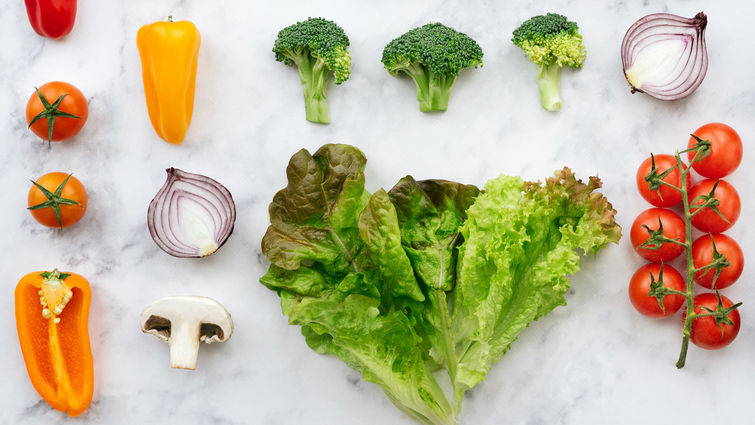
If you are worried about produce going to waste, there are ways to keep fruits and vegetables fresh for longer.
Loma Linda University School of Allied Health Professions graduate, dietitian Wendy Castro-Harris, MS, RDN, recommends the following produce storage tips.
Apples and Citrus Fruits
Those that you will use immediately you can keep at room temperature. The excess you can keep in the fridge for weeks, up to a month in the crisper fruit/vegetable drawer.
Bananas - several options
- Wrap stems in plastic wrap (or beeswax wrap) to avoid them from browning too quickly. When you remove a banana, make sure to rewrap. Keep away from other produce like apples and avocados so those don’t ripen too quickly.
- Let them ripen to your preference in room temperature, then place them in the fridge. The peel will get brown, but the inside should remain firm.
- Once bananas ripen at room temperature, peel and cut to preference (slices or chunks) and freeze.These are great to use in smoothies, baking, etc.
Basil and Thyme
Store in a tightly sealed silicone (reusable) sandwich-style bag.
Berries
Wash only as needed to prevent molding or wash all and keep in the fridge in a bowl lined with paper or cloth towel to absorb moisture. If freezing, use a salad spinner to remove as much moisture as possible after washing so berries don’t clump together during the freezing process.
Broccoli, Kale, Spinach
Keep some whole in the fridge that you’ll use this week. Wash and cut up the rest to put in a freezer safe bag in your freezer.
Carrots
Store in water, cut or whole. This will keep them fresh and crisp. Change out the water every week.
Cilantro and Parsley
Store standing up with stems in a glass jar or cup full of water in your fridge.
Mushrooms
Place whole, dry mushrooms in a paper bag and fold the top. Put into the main part of the fridge (not crisper fruit/vegetable drawers). The paper bag absorbs moisture. They will keep for a week, but if you have more than what you will use in 1 week, slice up and freeze remainder.
Potatoes, Sweet Potatoes, Onions & Garlic
Stock up on these because they last for weeks as long as they’re kept in a dark, dry place. Try the bottom shelf in your pantry or cabinet that doesn’t get opened much.
Tomatoes
Typically, these taste better when kept at room temperature, but to make them last you can keep them in your crisper drawer for a couple of weeks. Just make sure nothing heavy squishes or bruises them.
Winter Squashes
Also great to stock up on since they last for weeks due to their hard skin. Spaghetti squash can be used any way you would use pasta (both marinara or pesto sauces go great with it). Acorn squash is delicious roasted with some salt and pepper or stuffed with some quinoa/rice and lentils. Butternut squash is creamy and delicious and can be made into a soup, blended to be used instead of pizza sauce, or can be roasted with salt and pepper.
March is National Nutrition Month®, this year’s theme: “Eat Right, Bite by Bite.” To learn more nutrition tips or try out quick, wholesome meals, check out recipes on the Loma Linda University School of Allied Health Professions online cooking show “Live It: In the Kitchen.”
